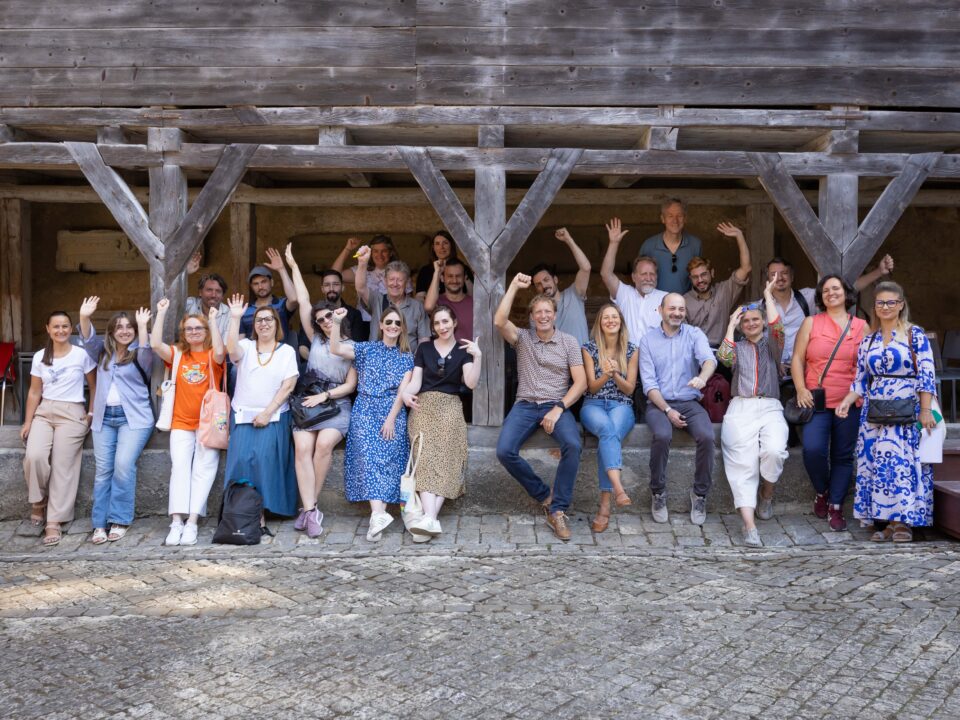

Genova HUB-IN
A new roadmap will guide the regeneration of the Caruggi area into an innovation and entrepreneurship hub
With its peculiar topography, unique architecture, and timeless beauty, Genova is one of the most popular Italian cities. Capital of Regione Liguria (Northwest of Italy), Genova is the largest seaport in the country and the sixth largest city overall. The city features one of Europe’s most extended, preserved, and densely populated mediaeval historic centres. It is particularly rich in cultural history, with impressive monuments, churches, aristocratic renaissance Palaces (Rolli palaces) and museums. Genova is included in the UNESCO World’s Heritage List since 2006.
In the early 1990s, a regeneration process started thanks to the creation of the “Porto Antico” area conceived by Genovese renowned architect Renzo Piano with the goal to reconnect the city with its sea. The University of Genova’s Architecture Faculty was also relocated here, attracting students and professionals, along with shops, bars and restaurants. Nowadays, the situation in the historic center is mixed, with some well-maintained parts characterised by the presence of important cultural and economic attractions and relevant touristic flows, while informal economic activities and crumbling buildings distinguish others.
THE NEW INNOVATIVE AND ARTISTIC OLD TOWN AREA DESIGNED WITH THE HELP OF CITIZENS
Genova aims at regenerating, revitalising and valorising the whole historic center, improving the quality of life of its inhabitants and workers, as well as the accessibility and experience of tourists. In particular, the HUB-IN project is focused on the old town area (“Caruggi”). This one includes the main cultural and commercial streets of the Western part of the old town, forming a transversal axis starting from Piazza Banchi, continuing to Via San Luca, Via del Campo and ending in Via di Pré. The area is very close to the Old Port and is characterised by a strong cultural and ethnic mix. It has been suffering from the gradual disappearance of quality economic and social activities.
The roadmap guiding the regeneration of the historic urban area is the result of a co-creation and co-design work conducted in the framework of the HUB-IN project. Between July 2021 and May 2022, a series of participatory workshops, surveys, and interviews were conducted with the main local stakeholders. According to the feedback received, the main challenge for Genova’s historic urban area is to fight decay in all its forms – physical, social, and economic – reversing tendencies of mistrust and fragmented relationships with locals. Stakeholders and citizens think that the most urgent actions are the renovation of buildings and the establishment of new economic activities. In any case, the regeneration should preserve the tradition of local production but also promote cultural fruition and social interaction.
GENOVA HUB-IN: AN OPEN-AIR, INCLUSIVE HUB TO BE FULLY EXPERIENCED
Genova HUB-IN is developing in parallel with two other programmes: “Caruggi Integrated Action Plan” and “Management Plan for the UNESCO site of Genova 2020-2024”. The HUB-IN project is structured around the following three main cross-cutting drivers: Economic development, Culture and Territorial animation.
It will not be a physical hub, but a set of widespread activities and events taking place throughout the pilot area. Genova wants to bring the hub directly to citizens and stakeholders, rather than the other way around, indeed.
The roadmap defines two missions developed to boost sociability, interaction, and collaboration:
Mission 1 | Foster the creation of new economic activities and the resilience of existing ones by strengthening their sustainability and creating acceleration programmes: promotion of innovative and high-quality economic activities, adoption of new business models, stimulation of digital and sustainability transition, training programmes.
Mission 2 | Enhance the quality of life of the area by leveraging on the potential offered by the Cultural and Creative Industry and on the many cultural, architectural and social assets of the area: ad-hoc support programmes and collaborations with designers and artists to enhance the aesthetic of the area; involvement of residents and city-users to re-imagine the public spaces through public art, with urban events and projects.
The historic centre has always been a vibrant melting pot, a multicultural place where all kinds of people, cultures, and traditions (food, artisanship, music) meet and mix in innovative ways. The goal is to innovate respecting traditions. Rediscovering its identity and culture by defining new functions and services to support the local communities.
By following the roadmap as a polar star, the Municipality will implement a series of concrete actions to make the historic centre a liveable, safe, and clean area with the best available services. Have a look at the roadmap to find out more about the project.




